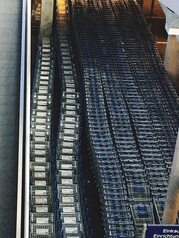The effect of culinary culture on real estate value

Culinary culture not only nourishes the body but can also play a crucial role in the valuation of properties. In this article, we will explore how the rich culinary heritage of a region influences real estate value, contrasting the dynamics of rural versus urban environments. From the popularity of local markets to the appeal of gourmet restaurants, we will uncover why investing in areas with a vibrant food scene could be a smart decision for potential buyers and developers.
The connection between gastronomy and cultural identity: Why does it matter?
Gastronomy is a deep reflection of the cultural identity of a community. Each dish, each ingredient, and each culinary tradition tells a story that connects people with their history, their environment, and each other. This connection not only feeds the body but also nurtures the sense of belonging and local pride. When a region stands out for its unique gastronomic offerings, it creates an appeal that goes beyond mere food; it becomes a destination that invites visitors to experience its culture in all its dimensions. The authenticity and diversity of local cuisine can be deciding factors for those looking to settle in a place or invest in it, as these aspects directly influence the perception of property value.
Moreover, gastronomy has the power to transform entire communities through tourism and economic development. Regions with a rich culinary tradition often experience an increase in the influx of tourists interested in exploring local markets, food festivals, and iconic restaurants. This flow not only benefits local businesses but also elevates the area's status as a desirable place to live and invest. Consequently, properties located in areas with a strong gastronomic identity tend to appreciate more quickly due to the growing interest from both local and international buyers. Thus, understanding this relationship between gastronomy and cultural identity becomes crucial for those wishing to make informed decisions about real estate investments.
2. Impact of gastronomic tourism in rural and urban areas
Gastronomic tourism has emerged as a significant driver of development in both rural and urban areas. In rural settings, promoting local cuisine through festivals, markets, and culinary routes not only attracts visitors but also highlights the value of the region's cultural and agricultural heritage. This revitalization can increase interest in local properties, as investors seek to capitalize on areas with growing tourist appeal. Furthermore, local farmers and producers can benefit by establishing direct connections with consumers through authentic culinary experiences, which elevates the economic profile of the community.
In cities, the impact of culinary tourism is manifested in the creation of vibrant neighborhoods where innovative restaurants and gourmet markets become focal points. These areas tend to experience an increase in real estate value due to their appeal to both residents and tourists. The presence of a diverse culinary offering can enhance the quality of life for inhabitants, thereby attracting new buyers and tenants willing to pay more to live near unique dining experiences. In this way, both in rural and urban contexts, culinary tourism acts as a catalyst that not only fosters cultural wealth but also drives the appreciation of the real estate market.
3. Restaurants as catalysts for real estate growth
Restaurants are not only spaces where one enjoys good food, but they also act as catalysts for real estate growth in their surroundings. The presence of a variety of restaurants, especially those offering unique dining experiences or local specialties, can transform a neighborhood and attract both residents and investors. This phenomenon occurs because consumers seek areas that offer diverse and quality culinary options, which increases the demand for nearby housing. Furthermore, a vibrant neighborhood with an appealing culinary offering tends to be viewed as more desirable, thereby raising property values.
On the other hand, the connection between restaurants and the real estate market goes beyond simply attracting customers. Property owners can benefit directly by seeing how their investment appreciates due to increased foot traffic and the interest generated by the influx of diners. Areas with a good culinary reputation often experience a domino effect; as more people visit to try new dishes, other businesses begin to thrive in the same area, creating a robust commercial ecosystem that further enhances the location's appeal. Therefore, investing in areas with a strong focus on gastronomy can prove not only lucrative but also transformative for the urban or rural environment in question.
4. Local markets: The economic heart of a community
Local markets are more than just simple points of sale; they are the beating heart of a community. These spaces not only offer fresh and authentic products, but they are also a social gathering place where local culinary culture is celebrated. By bringing together producers, chefs, and consumers, markets foster a sense of belonging and community pride. This dynamism not only enriches the culinary experience, but it also attracts both visitors and residents, resulting in an increase in real estate demand in nearby areas. The presence of a vibrant local market can be a key indicator of the economic potential of a neighborhood.
Additionally, local markets often serve as a platform for culinary innovation, where entrepreneurs can experiment with new flavors and concepts. This vibrancy creates a conducive environment for the emergence of unique restaurants and cafés that complement the market offering. As a result, properties located in these areas tend to appreciate quickly, driven by the appeal not only of good food but also of the comprehensive community experience they offer. Thus, investing in places with active local markets can be a savvy strategy for those looking to maximize their real estate investment in environments where culinary culture flourishes.
5. Culinary trends and their effect on the added value of land
Current culinary trends are redefining the real estate landscape in many communities. When an area becomes a culinary destination, whether through the opening of innovative restaurants, the proliferation of farmers' markets, or the celebration of culinary festivals, there is a growing interest from buyers and developers. This attraction not only enhances the quality of life for residents but also increases the demand for properties in the area, which can lead to a significant rise in prices. By creating an environment where dining experiences are accessible and varied, an emotional connection is established between the inhabitants and their surroundings, which is essential for the sustainable development of real estate value.
Additionally, culinary trends can have positive effects on local commerce and employment. The arrival of new dining options often leads to a revitalization of urban space; previously deserted streets are now filled with visitors eager to try the latest in gastronomy. This movement attracts other complementary businesses—such as specialty shops selling local products or services related to cooking—that also contribute to the economic growth of the area. In this sense, investing in properties located near these vibrant culinary scenes not only promises short-term profitability but also ensures long-term stability due to the continued appeal of the place as a cultural and recreational destination.
6. Comparison: Real estate investment in rural vs urban areas based on culinary offerings
Real estate investment in rural and urban areas presents distinctive characteristics, especially when analyzed through the lens of culinary offerings. In urban environments, culinary diversity is a significant attraction that can elevate property values. Renowned restaurants, gourmet markets, and the presence of prominent chefs can attract an audience willing to pay more to live near these unique experiences. This concentration of dining options not only enhances the quality of life but can also increase interest in purchasing or renting nearby homes, thereby driving up real estate market prices. On the other hand, rural areas are experiencing a resurgence thanks to their authentic and local culinary offerings. The trend toward responsible consumption and interest in organic and local products have led to an increase in the popularity of restaurants that celebrate regional cuisine. Investing in these areas can be equally appealing, as many people seek to escape urban hustle and find a refuge where they can enjoy a rich culinary experience surrounded by nature. Furthermore, the development of culinary routes and local festivals not only enhances culinary culture but also contributes to the growth of property values by attracting both tourists and permanent residents interested in this quieter lifestyle connected to their roots.
7. Success stories: Real estate projects influenced by culinary culture
Real estate projects that have incorporated culinary culture into their design and offerings have proven to be notable success stories. One example is the development of a residential complex in a city known for its annual culinary festival, where spaces for farmers' markets and local restaurants were integrated. This approach not only enriched the experience of the residents but also attracted investors interested in properties with high appreciation potential due to their proximity to culinary events and cultural activities. As a result, these properties have seen a significant increase in value, reflecting the direct connection between local gastronomy and interest in the real estate market.
Another emblematic case can be found in a revitalized neighborhood that has been transformed by a series of innovative restaurants and gourmet shops. Local authorities, recognizing the positive impact that gastronomy had on the area's appeal, decided to promote this culture through incentives for new food-related businesses. The result has been an increase in tourist traffic and a higher demand for housing in the area, which has driven up real estate prices. This demonstrates how real estate projects can benefit by aligning with local culinary trends, thus generating a synergy that enhances both urban development and regional food culture.



